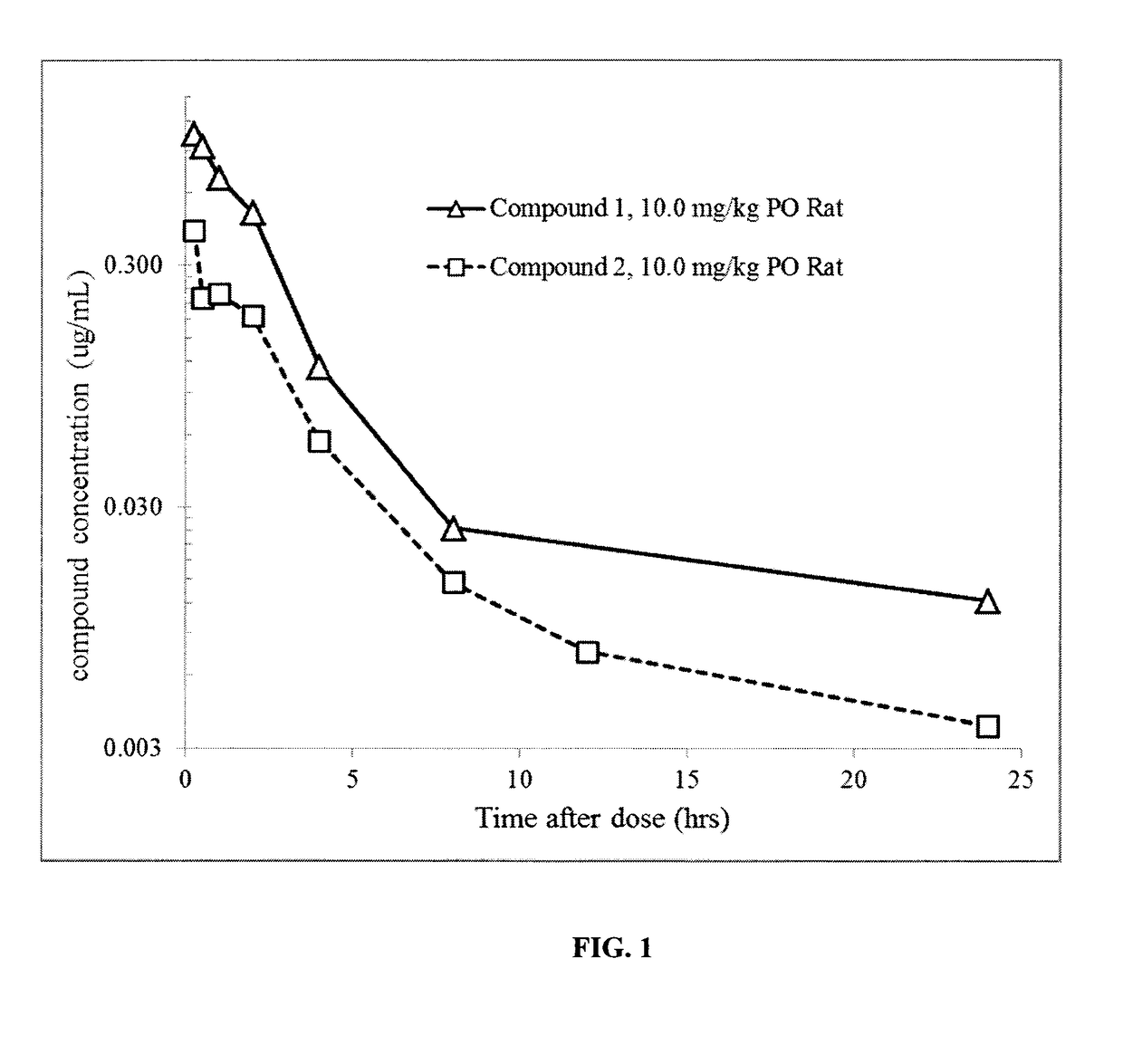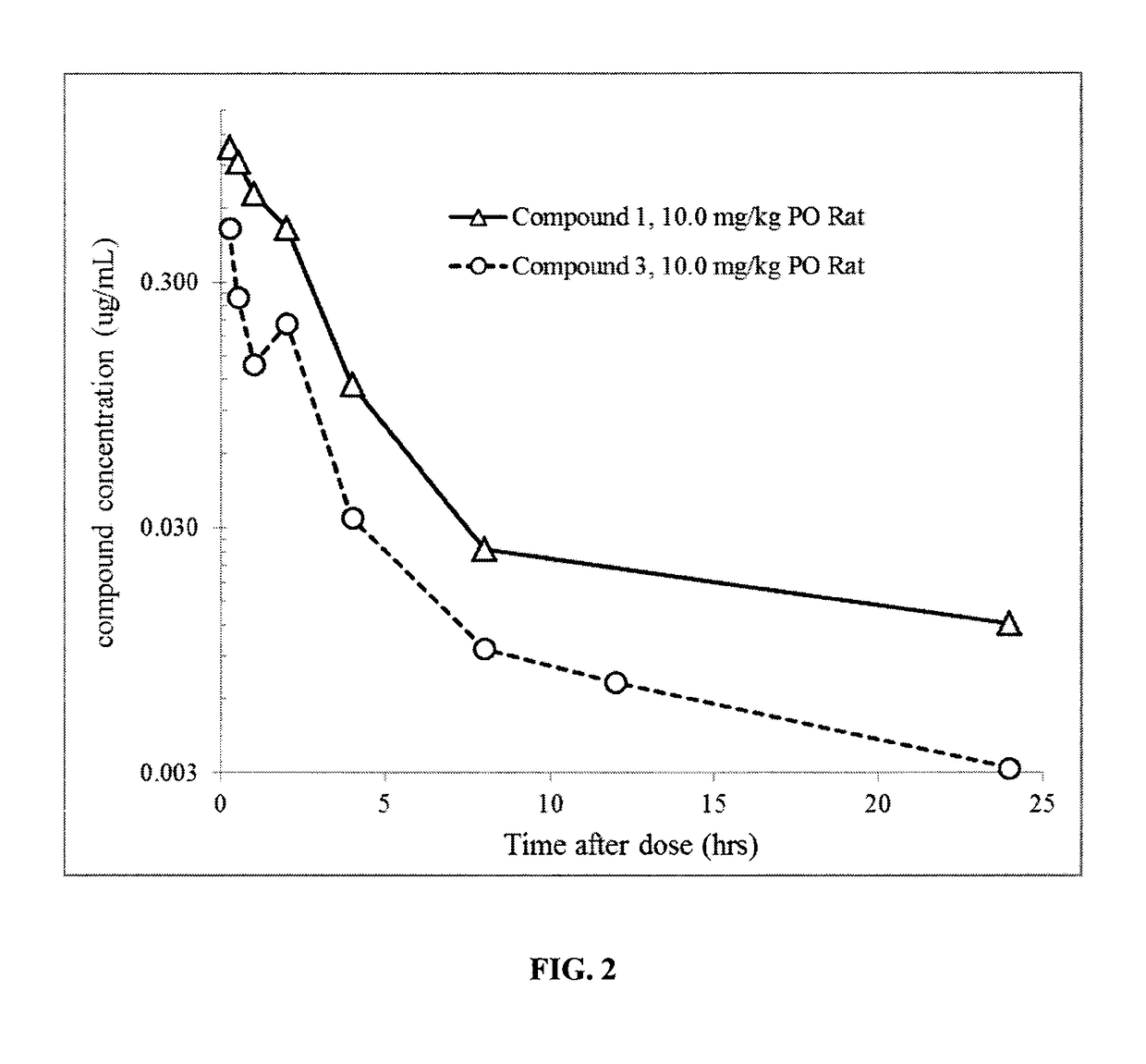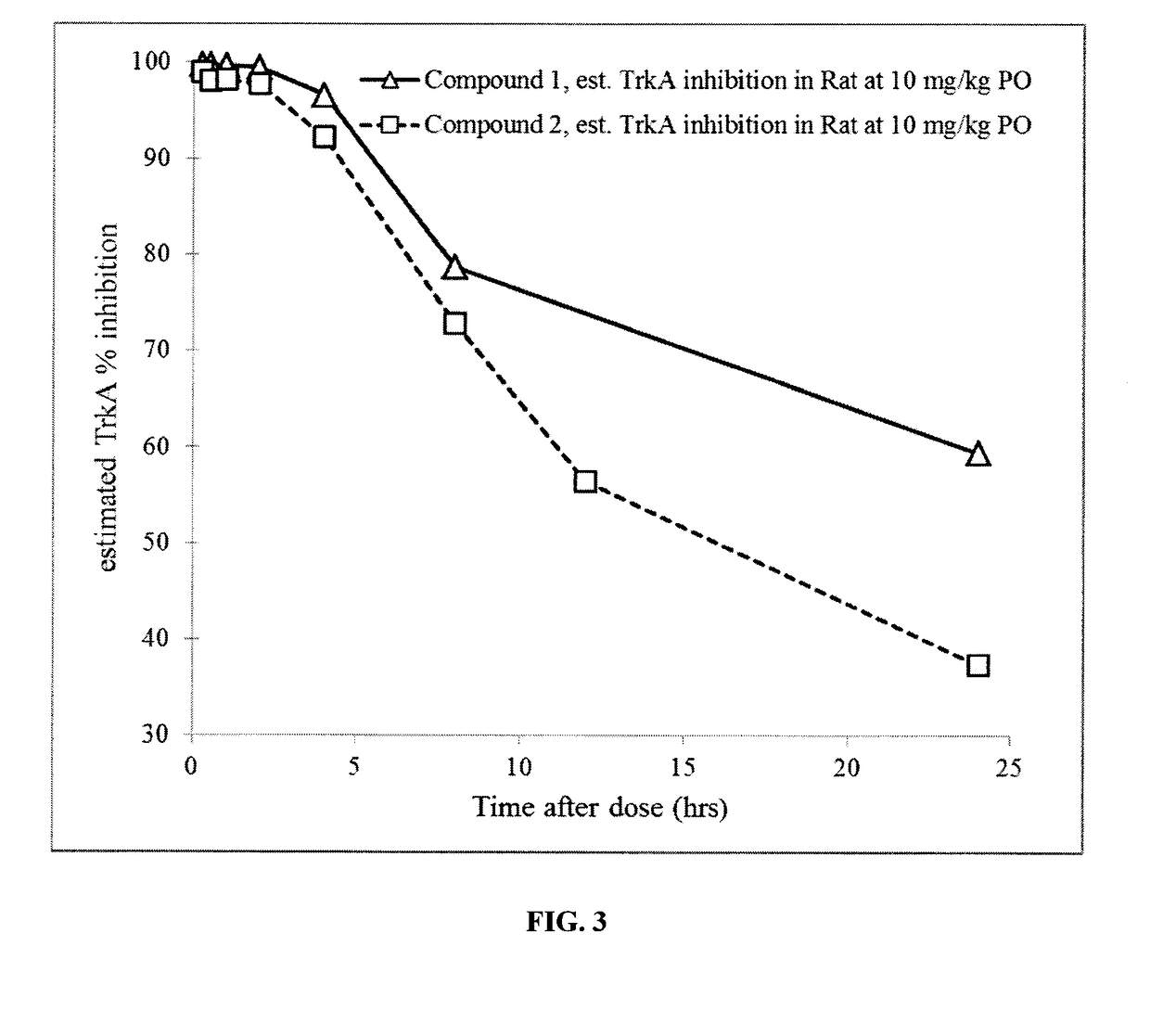1-((3s,4r)-4-(3-fluorophenyl)-1-(2-methoxyethyl)pyrrolidin-3-yl)-3-(4-methyl-3-(2-methylpyrimidin-5-yl)-1-phenyl-1h-pyrazol-5-yl)urea as a trka kinase inhibitor
a technology of pyrrolidin and urea, which is applied in the direction of immunological disorders, bulk chemical production, metabolism disorders, etc., can solve the problems of insufficient efficacy in treating severe pain, and inability to tolerate urea
- Summary
- Abstract
- Description
- Claims
- Application Information
AI Technical Summary
Benefits of technology
Problems solved by technology
Method used
Image
Examples
examples
Preparation of Synthetic Intermediates
Preparation A
[0223]
(3S,4R)-4-(3-fluorophenyl)-1-(2-methoxyethyl)pyrrolidin-3-amine dihydrochloride
[0224]Step A: Preparation of tert-butyl (3S,4R)-4-(3-fluorophenyl)-1-(2-methoxyethyl)pyrrolidin-3-ylcarbamate: A solution of tert-butyl (3S,4R)-4-(3-fluorophenyl)pyrrolidin-3-ylcarbamate (250 mg, 0.89 mmol, commercially available), DIEA (0.48 mL, 2.68 mmol) and 1-bromo-2-methoxyethane (149 mg, 1.07 mmol) in DMF (3 mL) was stirred at ambient temperature for 2 hours, then heated to 60° C. for 4 hours, then cooled to ambient temperature over 16 hours. After partitioning between EtOAc and saturated NaHCO3 (10 mL each), the organic layer was washed with water and brine (2×10 mL each), dried over Na2SO4, filtered and concentrated to yield tert-butyl (3S,4R)-4-(3-fluorophenyl)-1-(2-methoxyethyl)pyrrolidin-3-ylcarbamate (250 mg, 83% yield) as a viscous orange oil. LCMS (apci) m / z=339.1 (M+H).
[0225]Step B: Preparation of (3S,4R)-4-(3-fluorophenyl)-1-(2-metho...
preparation b
[0226]
4-methyl-3-(2-methylpyrimidin-5-yl)-1-phenyl-1H-pyrazol-5-amine
[0227]Step A: Preparation of 5-amino-4-methyl-1-phenyl-1H-pyrazol-3(2H)-one: A mixture of ethyl 2-cyanopropanoate (50.5 g, 397.2 mmol) and phenylhydrazine (39 mL, 397.2 mmol) in dioxane (100 mL) was heated at 110° C. for 5 days. The cooled mixture was concentrated to ½ volume and then cooled in ice and triturated with cold Et2O. The resulting solids were filtered, washed extensively with Et2O and dried under vacuum to afford 5-amino-4-methyl-1-phenyl-1H-pyrazol-3(2H)-one (34.69 g, 46% yield) as a fluffy white powder. MS (apci) m / z=190.1 (M+H).
[0228]Step B: Preparation of 5-amino-4-methyl-1-phenyl-1H-pyrazol-3-yl trifluoromethane sulfonate: A suspension of 5-amino-4-methyl-1-phenyl-1H-pyrazol-3(2H)-one (13.72 g, 72.5 mmol) and N-phenylbis(trifluoromethylsulfonamide) (27.2 g, 76.1 mmol) in DMF (100 mL) was treated with DIEA (37.9 mL, 217.5 mmol) and the mixture stirred at ambient temperature for 16 hours. The mixture...
preparation d
[0233]
(3S,4R)-4-(3-fluorophenyl)-1-(2-methoxyethyl)pyrrolidin-3-amine
[0234]Step A: Preparation of (trans)-4-(3-flourophenyl)-1-(2-methoxyethyl)pyrrolidine-3-carboxylic acid: (E)-3-(3-fluorophenyl)acrylic acid (25.20 g, 151.7 mmol) was treated sequentially with EtOAc (75 mL) and heptane (75 mL), followed by TFA (1.17 mL, 15.17 mmol). The mixture was placed in a cool-water bath (internal temperature 15° C.), and 2-methoxy-N-(methoxymethyl)-N-((trimethylsilyl)methyl)ethanamine [Preparation C] (69.82 g, 197.2 mmol) was added dropwise from an addition funnel over 20 minutes, adding ice to the water bath to maintain the internal temperature between 13-19° C. during the addition. The ice bath was removed and the mixture stirred at ambient temperature for 18 hours, then cooled (internal temperature 13° C.), and additional 2-methoxy-N-(methoxymethyl)-N-((trimethylsilyl)methyl)ethanamine (Preparation C; 34 g) was added dropwise from an addition funnel over 6 minutes. The bath was removed and ...
PUM
| Property | Measurement | Unit |
|---|---|---|
| temperature | aaaaa | aaaaa |
| temperature | aaaaa | aaaaa |
| temperature | aaaaa | aaaaa |
Abstract
Description
Claims
Application Information
 Login to View More
Login to View More - R&D
- Intellectual Property
- Life Sciences
- Materials
- Tech Scout
- Unparalleled Data Quality
- Higher Quality Content
- 60% Fewer Hallucinations
Browse by: Latest US Patents, China's latest patents, Technical Efficacy Thesaurus, Application Domain, Technology Topic, Popular Technical Reports.
© 2025 PatSnap. All rights reserved.Legal|Privacy policy|Modern Slavery Act Transparency Statement|Sitemap|About US| Contact US: help@patsnap.com



